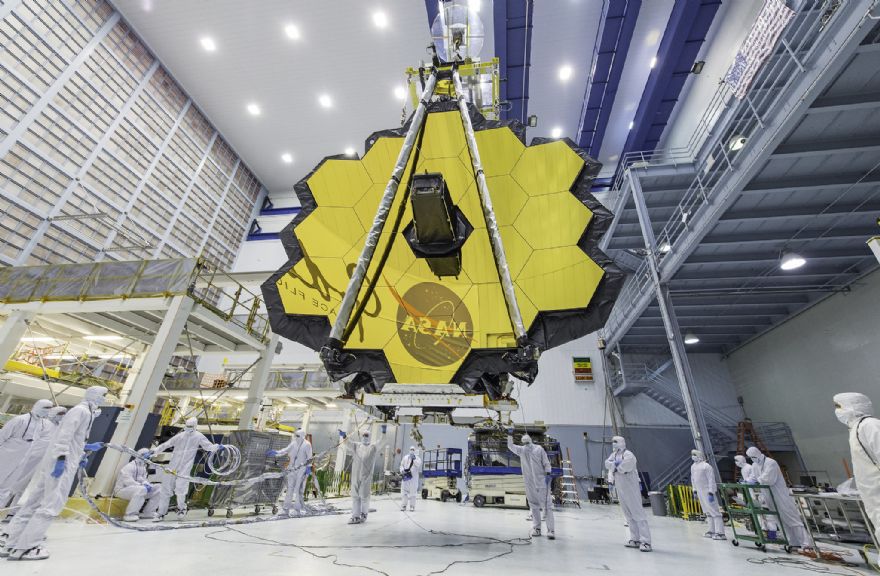 Picture courtesy of NASA
Picture courtesy of NASAThe most important space telescope since The Hubble Space Telescope (HST) is due to be launched on Christmas Day and Bedford-based
Cranfield University played its part by utilising its ultra-precison engineering expertise to give infrared sight to the instrument.
Lifting off on a European Ariane-5 rocket from French Guiana, the James Webb Space Telescope (JWST) is an unprecedented and powerful scientific instrument that will be able see further into the universe than anything else ever built.
The JWST has taken 30 years and £7.5 billion to develop. At seven times the size of the HST, which collects light using a main mirror of 2.4m, JWST has a primary mirror that is 6.5m in diameter. The light-collecting capability represents an unprecedented ability in sensitivity and promises to enable a step change in capability to observe and analyse the universe.
Including all the associated equipment, the JWST is about the size of a tennis court and must be folded to fit inside its launch rocket. The rocket will send the telescope about 1.6 million km from Earth. It is tuned to detect infrared light that Hubble is unable to, and while invisible to the human eye, it will be able to pick up the glow from the most distant objects in the universe.
Unlike the HST, which has been orbiting the Earth since 1990, the JWST will orbit the sun one million miles from earth. It is fully robotic, highly complex and has around 570 mirror optical surfaces. The most important part of the telescope is the mirror. Almost half of the JWST mirrors are installed within its Mid-Infrared Instrument (MIRI).
Paul Shore, director at Cranfield spin-out
Loxham Precision Ltd and head of engineering at the
National Physical Laboratory, said: “Cranfield developed the manufacturing capability and produced all the MIRI spectrometer mirrors. This amounted to 132 flight mirrors on 24 substrate components, together with a full set of flight spares. The development of the JWST MIRI optics, from initial samples, through to the delivery, was performed by the Cranfield team within a three-year period.”
He was previously McKeown Professor of Ultra Precision Technologies and Head of Precision Engineering at Cranfield University.
The JWST MIRI instrument was developed by the UK Astronomy Technology Centre in Edinburgh, which entrusted the Precision Engineering Institute at Cranfield University to manufacture the high-complexity image slicers and re-imager mirrors.
More of the JWST mirrors were made in Cranfield than any other location. They were produced on an ultra-precision CNC machine tool designed and manufactured at the University. Once operational, the telescope will see the light coming from the very first stars to shine in the Universe. The pioneer stars are thought to have switched on about 100-200 million years after the ‘Big Bang’, or a little over 13.5 billion years ago.
JWST will be picking out groupings of these stars. They are so far away that their light, even though it moves at 300,000km per sec, will have taken billions of years to travel the cosmos.
It should be possible for JWST to detect a faint glow from the moment when the darkness ended and those first stars flickered into life. It will help us understand the origins of everything we see around us, and how planets are formed.
JWST will have a fuel supply that should keep it stable in orbit for 10 years.